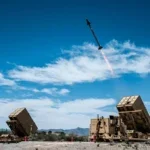The Air Force is debating whether its two remaining Defense Meteorological Satellite Program (DMSP) spacecraft will be useful by the time they are launched, according to a high-ranking official. “There’s a lot of people that say ‘Well, until you can prove otherwise that I don’t need to depend on this thing, we need to protect this thing,” Air Force Lt. Gen. Charles Davis, military deputy to the Assistant Secretary of the Air Force for Acquisition, told reporters yesterday during Defense…
Contract Updates
Oshkosh Defense LLC (Oshkosh, Wisconsin) – $29,432,585
Oshkosh Defense LLC, Oshkosh, Wisconsin, has been awarded an estimated $29,432,585 firm-fixed-price, indefinite-delivery/indefinite-quantity contract for steering gears. This was a sole-source acquisition using justification 10 U.S. Code 3204 (a)(1), as stated in Federal Acquisition Regulation 6.302-1. This is a three-year…
Propper International Inc. (Cabo Rojo, Puerto Rico) – $48,380,842
Propper International Inc., Cabo Rojo, Puerto Rico, has been awarded a maximum $48,380,842 fixed-price, indefinite-delivery/indefinite-quantity contract for flame resistant pants. This was a competitive acquisition with four responses received. This is a one-year contract with no option periods. The ordering…
Northrop Grumman Systems Corp. (Rolling Meadows, Illinois) – $50,000,000
Northrop Grumman Systems Corp., Rolling Meadows, Illinois, was awarded a $50,000,000 modification (P00033) to a previously awarded contract (FA8540-19-D-0001) for LITENING CATP program. This modification brings the total face value of the contract to $1,360,000,000 from $1,310,000,000. This action does…
World Wide Technology LLC (St. Louis, Missouri) – $15,285,426
World Wide Technology LLC, St. Louis, Missouri, is awarded a $15,285,426 firm-fixed-price contract. This effort procures Information Technology hardware and software in support of the Program Executive Office Digital Enterprise Services, Webster Outlying Field Integrated Command, Control and Intel Systems…













